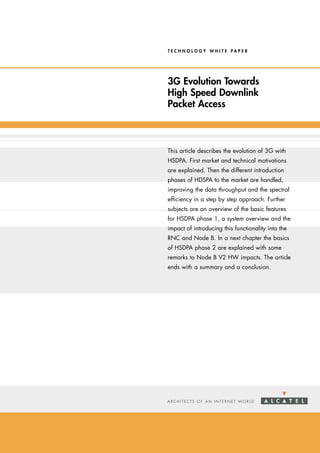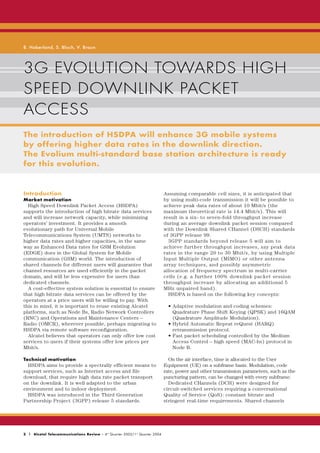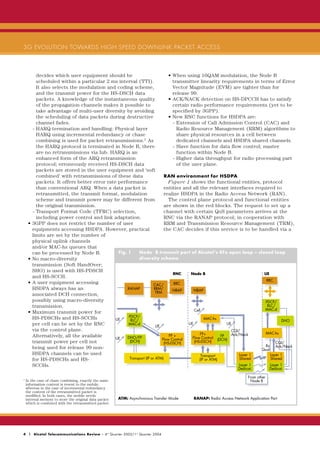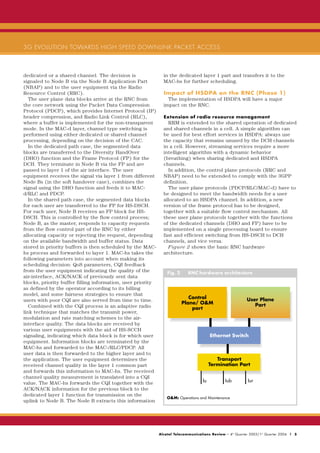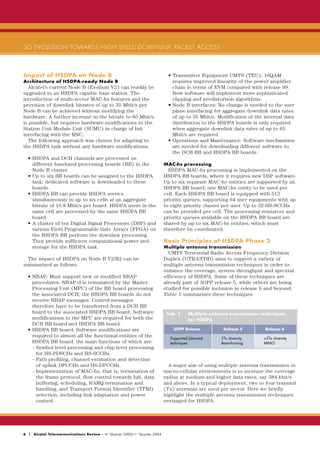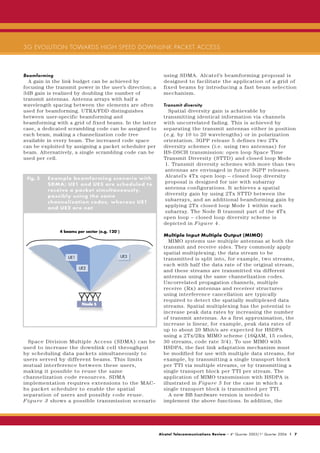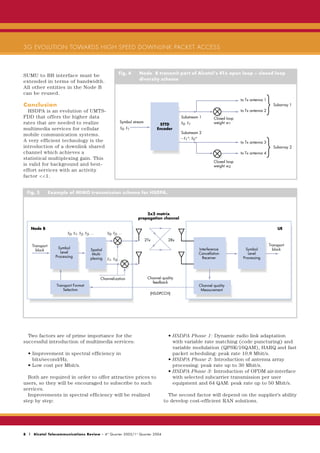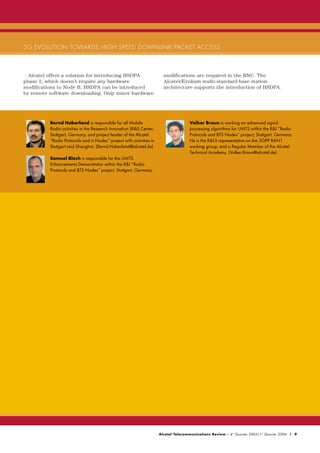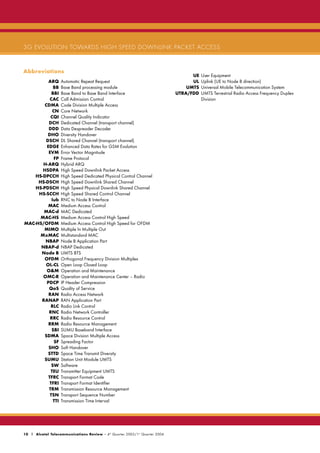The document describes the evolution of 3G mobile systems with the introduction of High Speed Downlink Packet Access (HSDPA). HSDPA will enhance 3G by offering higher data rates in the downlink direction through the use of new physical channels, adaptive modulation, Hybrid Automatic Repeat Request, and fast packet scheduling controlled by the Node B. The introduction of HSDPA will occur in phases, with the first phase introducing basic HSDPA functionality and the second phase enhancing it further through the use of technologies like MIMO. HSDPA aims to improve spectral efficiency and support high-speed data services for mobile users.
